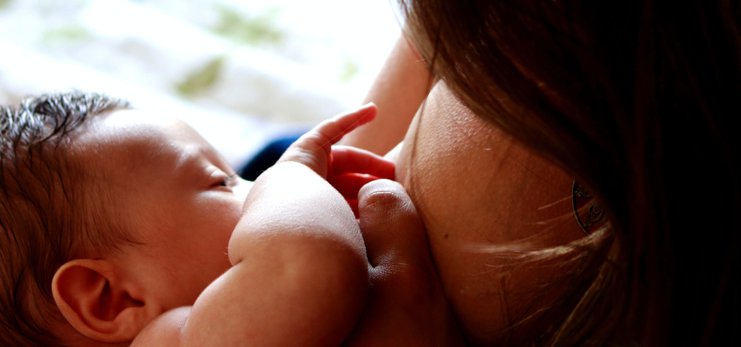Breastfeeding in the first few days
The first few hours after birth are very important for the start of your breastfeeding relationship because the rooting and sucking reflexes are especially pronounced at this time. The breastfeeding relationship gets off to the best start if the baby is placed naked on mum’s stomach after birth and stays there until she sucks at the breast. Sometimes babies even move towards the breast by themselves and take it without being helped by anyone.
Some babies suck energetically from the very beginning while others start more cautiously and may just lick the nipple.
Even straight after a Caesarean birth, many hospitals will give you or your partner the chance to hold your baby on your naked body to give her a loving welcome.
If this is not possible you can do it later on at any time. Lay your naked baby directly on your naked breast (kangaroo care) for a few hours. This encourages milk production and helps your relationship develop and grow from day to day.
The first milk – colostrum
During the first few days after the baby’s birth you produce colostrum (first milk).
This is a thick yellowish milk that is easy to digest. It is rich in immune substances (known as antibodies or immunoglobulins). These line the walls of the baby’s intestine and protect her from infections.
When the milk comes in
The milk comes in gradually between the 2nd and 4th day after birth (sometimes on the 6th or 7th day too, and not until the 10th to 14th day in women with premature babies) marking the change from colostrum to mature breast milk. The breasts become warmer, bigger and full. The amount of milk increases. This process is often accompanied by swelling of the glands which makes the breasts hard and painful. It is possible to prevent swelling of the milk glands by breastfeeding frequently from birth onwards and giving your breasts short, gentle massages. If you still experience pain when the milk comes in despite this, here are some other methods that may help and make it easier for your baby to latch on:
- Empty each breast regularly by putting your baby to the breast frequently or by expressing, e.g. with an Ardo Carum electric breastpump.
- A short pumping session before a feed can relieve the tension so that the baby can take the breast more easily.
- If the areolar region is very swollen, reverse pressure softening can help; this involves gently pressing the nipple area inwards toward the ribs with the tips of your fingers (reverse pressure softening method).
- Applying cold compresses after breastfeeds can also be helpful.

